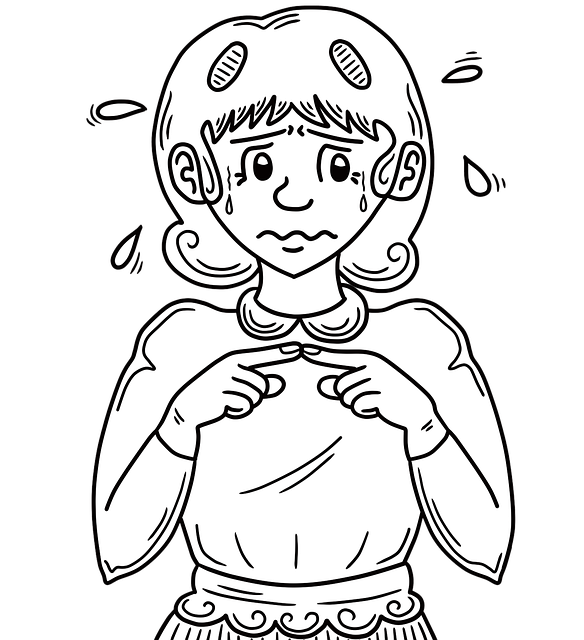Neurovascular imaging, combining MRA, CTA, and DTI, offers 3D mapping of nerves and vessels, revolutionizing neurosurgery with enhanced precision in complex procedures, reduced damage, and improved patient outcomes through detailed neural structure visualization.
“Revolutionize neurosurgical procedures with 3D nerve mapping, a groundbreaking technique in neurovascular imaging. This advanced technology offers an intricate view of neural structures, enhancing safety and accuracy during complex surgeries. By unlocking nerve mapping, surgeons can navigate critical pathways, minimizing risks and improving outcomes.
In this article, we explore the transformative power of 3D mapping, delving into its technical intricacies and advantages, ultimately fostering better patient care.”
Understanding Neurovascular Imaging: Unlocking Nerve Mapping
Neurovascular imaging has emerged as a groundbreaking technology, transforming neurosurgical practices by providing an in-depth understanding of the brain’s intricate network. This advanced imaging technique goes beyond traditional 2D methods, offering a three-dimensional (3D) mapping system that visualizes both nerve structures and blood vessels with unprecedented clarity. By combining various imaging modalities, such as magnetic resonance angiography (MRA), computed tomography angiography (CTA), and diffusion tensor imaging (DTI), neurovascular imaging creates detailed models of the brain’s anatomy.
Unlocking nerve mapping through this technology enables surgeons to navigate complex procedures with enhanced precision. It allows for the identification of crucial neural pathways, blood vessels, and their interactions, ensuring safer surgeries. With 3D visualizations, surgeons can plan routes around vital structures, minimize damage, and improve overall surgical outcomes. Neurovascular imaging is a game-changer, providing a comprehensive view of the brain’s neurovascular landscape, ultimately leading to more successful neurosurgical interventions.
Advantages of 3D Nerve Mapping in Neurosurgery
3D nerve mapping offers several advantages in neurosurgical procedures, revolutionizing how surgeons approach complex operations. By providing detailed, accurate representations of neural structures, this technique enables more precise planning and execution. Unlike traditional 2D imaging methods, 3D mapping allows surgeons to visualize nerve trajectories, branching patterns, and relationships with surrounding vessels in a comprehensive, integrated manner.
This enhanced visualization translates into improved surgical outcomes. Surgeons can better identify and preserve critical neurovascular structures, reducing the risk of damage and associated complications. Additionally, 3D nerve mapping facilitates navigation through intricate anatomical regions, making it particularly valuable for deep brain and spine surgeries. The technology’s ability to provide real-time, high-resolution data promotes more informed decision-making during procedures.
Technical Aspects: Creating Accurate 3D Maps
Creating accurate 3D maps for neurosurgical procedures involves a sophisticated blend of cutting-edge technology and meticulous data processing. Neurovascular imaging plays a pivotal role in this process, as it captures detailed, three-dimensional representations of neural structures and blood vessels. Advanced techniques like magnetic resonance angiography (MRA) and computed tomography angiography (CTA) are employed to generate high-resolution images that serve as the foundation for these maps.
Data from multiple imaging modalities is then seamlessly integrated using specialized software algorithms. This integration ensures a comprehensive understanding of neural topography, enabling surgeons to navigate complex anatomical landscapes with enhanced precision. The end result is a highly accurate 3D nerve map, which acts as an indispensable navigation tool during delicate neurosurgical interventions.
Enhancing Patient Outcomes with Advanced Visualization
In the realm of neurosurgery, where precision is paramount, advanced visualization techniques like 3D nerve mapping have emerged as game-changers. This innovative approach leverages cutting-edge neurovascular imaging to enhance surgical planning and execution, ultimately improving patient outcomes. By creating detailed, three-dimensional models of complex neural structures, surgeons gain invaluable insights into the intricate relationships between nerves, blood vessels, and surrounding tissues.
Such visualization tools enable more accurate navigation during procedures, reducing the risk of nerve damage and associated complications. This, in turn, translates to faster recovery times and better post-operative patient satisfaction. With 3D nerve mapping, surgeons can make informed decisions, tailor their approaches, and confidently navigate through challenging anatomical territories, ensuring successful outcomes for even the most complex neurosurgical cases.
3D nerve mapping, facilitated by advanced neurovascular imaging techniques, represents a significant leap forward in neurosurgery. By providing detailed, three-dimensional visualizations of neural structures, this technology offers numerous advantages, from improved surgical precision to enhanced patient outcomes. The technical aspects involved in creating accurate 3D maps are complex but crucial, ensuring surgeons have a comprehensive understanding of the brain’s intricate network during procedures. As these innovations continue to develop, they promise to transform neurosurgical practices, benefiting both patients and healthcare providers alike.
